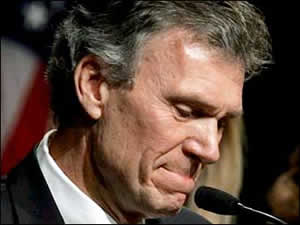Tom Daschle Will Be Next Secretary of HHS: What Does This Mean For Healthcare?
I’ve had my eye on Tom Daschle for many months – and attended a healthcare conference in June ’08 in which he was the keynote. I blogged about his ideas previously, but thought it would be valuable to repost them here (h/t to The Healthcare Blog):
Tom Daschle, former Senate Majority Leader from South Dakota, was the keynote speaker at the Fighting Chronic Disease: The Missing Link in Health Reform conference here in Washington, DC. His analysis of the healthcare crisis is this:
US Healthcare has three major problems: 1) Cost containment. We spend $8000/capita – 40% more than the next most expensive country in the world (Switzerland). Last year businesses spent more on healthcare than they made in profits. General motors spends more on healthcare than they do on steel.
2) Quality control. The US system cannot integrate and create the kind of efficiencies necessary. The WHO has listed us as 35 in overall health outcomes. Some people ask, “If we have a quality problem, why do kings and queens come to the US for their healthcare?” They come to the best places like the Mayo Clinic, the Cleveland Clinic, or Johns Hopkins. They don’t go to rural South Dakota. We have islands of excellence in a sea of mediocrity.
3) Access. People are unable to get insurance if they have a pre-existing condition. 47 million people don’t have health insurance. We have a primary care shortage, and hospitals turning away patients because they’re full.
His solutions are these:
- Universal coverage. If we don’t have universal coverage we can’t possibly deal with the universal problems that we have in our country.
- Cost shifting is not cost savings. By excluding people from the system we’re driving costs up for taxpayers – about $1500/person/year.
- We must recognize the importance of continuity of care and the need for a medical home. Chronic care management can only occur if we coordinate the care from the beginning, and not delegating the responsibility of care to the Medicare system when the patient reaches the age of 65.
- We must focus on wellness and prevention. Every dollar spent on water fluoridation saves 38 dollars in dental costs. Providing mammograms every two years to all women ages 50-69 costs only $9000 for every life year saved.
- Lack of transparency is a devastating aspect of our healthcare system. We can’t fix a system that we don’t understand.
- Best practices – we need to adopt them.
- We need electronic medical records. We’re in 21st century operating rooms with 19th century administrative rooms. We use too much paper – we should be digital.
- We have to pool resources to bring down costs.
- We need to enforce the Stark laws and make sure that proprietary medicine is kept in check.
- We rely too much on doctors and not enough on nurse practitioners, pharmacists, and physician assistants. They could be used to address the primary care shortage that we have today.
- We have to change our infrastructure. Congress isn’t capable of dealing with the complexity of the decision-making in healthcare. We need a decision-making authority, a federal health board, that has the political autonomy and expertise and statutory ability to make the tough decisions on healthcare on a regular basis. Having this infrastructure in place would allow us the opportunity to integrate public and private mechanisms within our healthcare system in a far more efficient way.
What do I think of this? First of all, I agree with much of what Tom said (especially points 2-7) and I respect his opinions. However, I was also very interested in Nancy Johnson’s retort (she is a recently retired republican congresswoman from Connecticut).
Nancy essentially said that any attempt at universal coverage will fail if we don’t address the infrastructure problem first. So while she agrees in principle with Tom Daschle’s aspirations and ideals, she believes that if we don’t have a streamlined IT infrastructure for our healthcare system in place FIRST, there’s not much benefit in having universal coverage.
As I’ve always said, “equal access to nothing is nothing.”
I also think of it this way: imagine you own a theme park like Disney World and you have thousands of people clamoring at the gates to enter the park. One option is to remove the gates (e.g. universal coverage) to solve consumer demand. Another option is to design the park for maximal crowd flow, to figure out how to stagger entry to various rides, and to provide multiple options for people while they’re waiting – and then invite people to enter in an orderly fashion.
Obviously, this is not a perfect analogy – but my opinion is that until we streamline healthcare (primarily through IT solutions), we’ll continue to be victims of painful inefficiencies that waste everyone’s time. It’s as if our theme park has no gates, no maps, no redirection of crowd flow, no velvet-roped queues, and the people who get on the rides first are not the ones who’ve been waiting the longest, but the “VIPs” with good insurance or cash in the bank. It’s chaotic and unfair.
Quite frankly, I think we could learn a lot from Disney World – and I hope and pray that next year’s healthcare solution is not simply ”remove the gates.”
What do you think?











